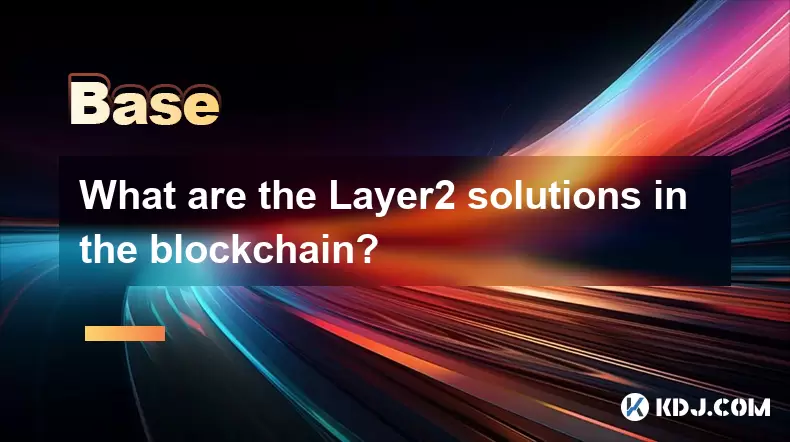-
 Bitcoin
Bitcoin $113900
-1.39% -
 Ethereum
Ethereum $3517
-4.15% -
 XRP
XRP $3.009
1.59% -
 Tether USDt
Tether USDt $0.9997
-0.04% -
 BNB
BNB $766.8
-1.41% -
 Solana
Solana $164.6
-2.38% -
 USDC
USDC $0.9998
-0.02% -
 TRON
TRON $0.3277
0.65% -
 Dogecoin
Dogecoin $0.2023
-1.67% -
 Cardano
Cardano $0.7246
0.05% -
 Hyperliquid
Hyperliquid $38.27
-4.77% -
 Sui
Sui $3.528
-0.52% -
 Stellar
Stellar $0.3890
-0.73% -
 Chainlink
Chainlink $16.16
-2.69% -
 Bitcoin Cash
Bitcoin Cash $539.9
-4.38% -
 Hedera
Hedera $0.2425
-2.00% -
 Avalanche
Avalanche $21.71
-0.97% -
 Toncoin
Toncoin $3.662
5.73% -
 Ethena USDe
Ethena USDe $1.000
-0.02% -
 UNUS SED LEO
UNUS SED LEO $8.964
0.35% -
 Litecoin
Litecoin $107.7
2.33% -
 Shiba Inu
Shiba Inu $0.00001223
-0.40% -
 Polkadot
Polkadot $3.617
-0.97% -
 Uniswap
Uniswap $9.052
-2.49% -
 Monero
Monero $295.1
-3.79% -
 Dai
Dai $0.9999
0.00% -
 Bitget Token
Bitget Token $4.315
-1.85% -
 Pepe
Pepe $0.00001060
0.11% -
 Cronos
Cronos $0.1342
-2.72% -
 Aave
Aave $256.0
-0.87%
What are the Layer2 solutions in the blockchain?
Layer2 solutions enhance blockchain scalability by processing transactions off-chain, reducing fees and increasing speed while maintaining security through main-chain finality.
Jun 14, 2025 at 07:00 pm

Understanding Layer2 Solutions in Blockchain
Blockchain technology has revolutionized the way data is stored and transactions are processed. However, as adoption increases, scalability issues have become a significant bottleneck. Layer2 solutions refer to protocols built on top of existing blockchain networks (commonly referred to as Layer1) to improve transaction speed and reduce fees without compromising security.
These solutions operate by handling transactions off the main chain while still relying on the underlying blockchain for final settlement. This approach allows for faster processing times and lower costs, making blockchain more viable for everyday use.
How Do Layer2 Solutions Work?
The core idea behind Layer2 solutions is to shift most transactional activity away from the main chain. Instead of every transaction being recorded directly on the blockchain, they are handled through secondary frameworks or channels. Once finalized, only the net result is submitted back to the main chain.
One popular example is the Lightning Network, which operates on top of Bitcoin. It enables instant payments between users through bidirectional payment channels. These channels can remain open for extended periods, allowing multiple transactions without burdening the main blockchain.
Another mechanism involves state channels, where participants agree on a set of conditions and only update the network when necessary. These channels ensure that only the final state of interactions is recorded on-chain.
Different Types of Layer2 Scaling Solutions
- Payment Channels: These allow two parties to conduct unlimited transactions off-chain, with only the opening and closing balances published on the blockchain.
- State Channels: Similar to payment channels but support more complex interactions beyond just financial transfers, such as smart contract execution.
- Plasma: A framework developed for Ethereum that creates child blockchains anchored to the main chain. It allows for scalable applications by handling most operations off-chain.
- Rollups: These bundle multiple transactions into one, submitting them as a single entry to the main blockchain. Two main types include Optimistic Rollups, which assume transactions are valid unless challenged, and ZK-Rollups, which use cryptographic proofs for validation.
Each type of Layer2 solution offers unique trade-offs regarding security, decentralization, and efficiency, catering to different use cases across the blockchain ecosystem.
Benefits of Implementing Layer2 Protocols
Implementing Layer2 solutions provides several advantages:
- Enhanced Scalability: By moving transactions off-chain, these solutions significantly increase throughput, enabling thousands of transactions per second.
- Reduced Transaction Costs: Since fewer transactions occur directly on the main chain, gas fees decrease substantially.
- Faster Transaction Finality: Off-chain processing leads to near-instant confirmations, improving user experience.
- Improved Privacy: Some Layer2 protocols offer enhanced privacy features, keeping transaction details confidential until settlement on the main chain.
These benefits make Layer2 solutions crucial for mass adoption of blockchain technology, especially in environments requiring high throughput and low latency.
Challenges and Limitations of Layer2 Technologies
Despite their advantages, Layer2 solutions come with certain challenges:
- Complexity: Setting up and managing Layer2 systems can be technically demanding, requiring additional infrastructure and expertise.
- Security Concerns: While most solutions inherit security from the base layer, certain models like Optimistic Rollups introduce potential vulnerabilities if not properly enforced.
- User Experience Barriers: Users may face learning curves when interacting with Layer2 platforms, especially those involving channel management or fund locking.
- Interoperability Issues: Ensuring seamless interaction between different Layer2 solutions and Layer1 chains remains an ongoing challenge.
Addressing these limitations is essential for widespread adoption and integration within the broader blockchain landscape.
Use Cases and Real-World Applications
Several prominent projects have successfully implemented Layer2 solutions to enhance performance:
- Bitcoin’s Lightning Network: Enables microtransactions and instant payments, ideal for retail scenarios and cross-border remittances.
- Ethereum’s Arbitrum and Optimism: Both leverage Optimistic Rollups to scale decentralized finance (DeFi) applications, NFT marketplaces, and gaming platforms.
- StarkWare and ZK-Rollups: Utilizes zero-knowledge proofs to provide secure and scalable solutions for high-throughput applications like exchanges and trading platforms.
These implementations demonstrate how Layer2 technologies are already transforming blockchain usability across various industries.
Frequently Asked Questions
Q: Are Layer2 solutions compatible with all blockchains?
A: No, compatibility depends on the specific blockchain's architecture and whether it supports extensible off-chain protocols. Most Layer2 solutions are designed for specific ecosystems like Ethereum or Bitcoin.
Q: Can Layer2 solutions be used for smart contracts?
A: Yes, many Layer2 protocols, such as Optimism and Arbitrum, support smart contract execution, enabling developers to build scalable decentralized applications (dApps).
Q: How do users access Layer2 networks?
A: Users typically interact with Layer2 solutions via wallets or dApps that integrate with the chosen Layer2 protocol. Funds must often be bridged from the main chain to the Layer2 network before use.
Q: What happens if a Layer2 service goes offline?
A: Most Layer2 solutions have mechanisms to ensure users can reclaim their funds even if the service becomes unavailable. However, temporary disruptions may affect transaction speed and availability.
Disclaimer:info@kdj.com
The information provided is not trading advice. kdj.com does not assume any responsibility for any investments made based on the information provided in this article. Cryptocurrencies are highly volatile and it is highly recommended that you invest with caution after thorough research!
If you believe that the content used on this website infringes your copyright, please contact us immediately (info@kdj.com) and we will delete it promptly.
- Solana, Axiom Exchange, and Revenue: Navigating the Future of DeFi
- 2025-08-02 12:50:12
- Cardano (ADA) and Altcoin Gains: Navigating the Crypto Landscape
- 2025-08-02 12:55:11
- Bitcoin's Bearish Momentum: Fakeout or the Real Deal?
- 2025-08-02 12:30:12
- Ethereum's Rocky Climb: Analysts Eye New ATH Despite Recent Dip
- 2025-08-02 10:30:11
- Ethereum Price, ETF Inflows, and ETH Tokens: What's Driving the Market?
- 2025-08-02 10:50:12
- Ethereum, ADA, and Price Support: What's Next for These Crypto Titans?
- 2025-08-02 10:50:12
Related knowledge

What is the difference between CeFi and DeFi?
Jul 22,2025 at 12:28am
Understanding CeFi and DeFiIn the world of cryptocurrency, CeFi (Centralized Finance) and DeFi (Decentralized Finance) represent two distinct financia...

How to qualify for potential crypto airdrops?
Jul 23,2025 at 06:49am
Understanding What Crypto Airdrops AreCrypto airdrops refer to the distribution of free tokens or coins to a large number of wallet addresses, often u...

What is a crypto "airdrop farmer"?
Jul 24,2025 at 10:22pm
Understanding the Role of a Crypto 'Airdrop Farmer'A crypto 'airdrop farmer' refers to an individual who actively participates in cryptocurrency airdr...

What is the difference between a sidechain and a Layer 2?
Jul 20,2025 at 11:35pm
Understanding the Concept of SidechainsA sidechain is a separate blockchain that runs parallel to the main blockchain, typically the mainnet of a cryp...

What is the Inter-Blockchain Communication Protocol (IBC)?
Jul 19,2025 at 10:43am
Understanding the Inter-Blockchain Communication Protocol (IBC)The Inter-Blockchain Communication Protocol (IBC) is a cross-chain communication protoc...

How does sharding improve scalability?
Jul 20,2025 at 01:21am
Understanding Sharding in BlockchainSharding is a database partitioning technique that is increasingly being adopted in blockchain technology to enhan...

What is the difference between CeFi and DeFi?
Jul 22,2025 at 12:28am
Understanding CeFi and DeFiIn the world of cryptocurrency, CeFi (Centralized Finance) and DeFi (Decentralized Finance) represent two distinct financia...

How to qualify for potential crypto airdrops?
Jul 23,2025 at 06:49am
Understanding What Crypto Airdrops AreCrypto airdrops refer to the distribution of free tokens or coins to a large number of wallet addresses, often u...

What is a crypto "airdrop farmer"?
Jul 24,2025 at 10:22pm
Understanding the Role of a Crypto 'Airdrop Farmer'A crypto 'airdrop farmer' refers to an individual who actively participates in cryptocurrency airdr...

What is the difference between a sidechain and a Layer 2?
Jul 20,2025 at 11:35pm
Understanding the Concept of SidechainsA sidechain is a separate blockchain that runs parallel to the main blockchain, typically the mainnet of a cryp...

What is the Inter-Blockchain Communication Protocol (IBC)?
Jul 19,2025 at 10:43am
Understanding the Inter-Blockchain Communication Protocol (IBC)The Inter-Blockchain Communication Protocol (IBC) is a cross-chain communication protoc...

How does sharding improve scalability?
Jul 20,2025 at 01:21am
Understanding Sharding in BlockchainSharding is a database partitioning technique that is increasingly being adopted in blockchain technology to enhan...
See all articles

























































































